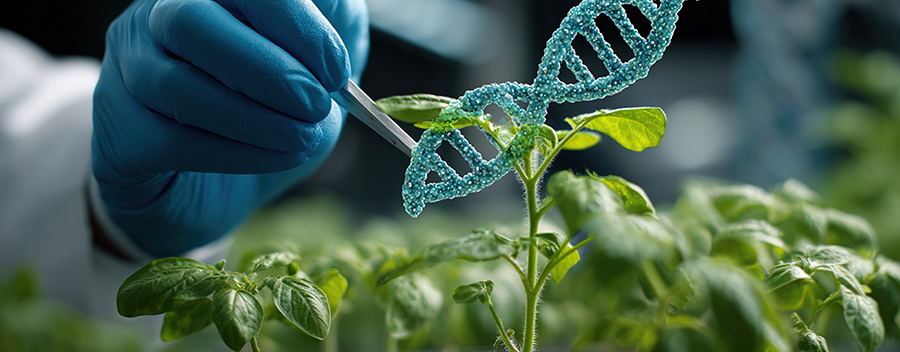The facts and future of gene technology
Last year the Gene Technology Amendment Bill 2024 was presented to the New Zealand parliament aiming to lift the countries nearly 30-year ban on gene technology outside the laboratory and establish a dedicated regulator by the end of 2025. While the passage of the current bill is not certain, a future with gene technology appears so.
In this article we will look at the facts of gene technology, the discussion around it, and the future that genetically modified organisms (GMOs) may have across Australia and New Zealand.
What is gene technology?
Gene technology is a branch of biotechnology wherein there is a direct modification or removal of a gene from an organism, or the transfer of a gene from one species to another to achieve a desired trait within the recipient organism.
As with other forms of biotechnology, gene technology is a means to change an organism so that it provides some benefit, whether that be to humans or the environment.
For example, a genetically modified cotton has been developed that contains a gene from bacteria which produces an insecticide, reducing the need for crop spraying.
Overseas, gene technology is being used in food to alter its nutritional content, for example the production of beta carotene in ‘golden rice’ to help reduce vitamin A deficiency.
Gene technology is also being used in vaccines. And there is emerging research for its use in bioremediation, for example, GM microbes that may be able to remove microplastics from the environment.
How gene technology works
There are numerous techniques for gene technology, including, but not limited to:
- Silencing or reducing the activity of undesirable genes by RNA interference, where the gene’s ‘instructions’ are changed to prevent it from making its protein, therefore ‘silencing’ the gene
- Implanting a gene from one species into another (transgenics)
- Editing genes using precision tools like CRISPR, where an enzyme is used to precisely cut a section of a cell’s DNA and then inserting new DNA during repair, effectively ‘stitching in’ the desired gene
- Increasing the inheritability of a desired gene or trait through gene drives.

Other forms of biotechnology
Selective breeding
Selective breeding is a long-standing example of biotechnology which involves crops or animals with desired traits being bred to maintain these traits in their offspring (for example, the selective breeding of high-yielding dairy cows, or crossbreeding to create disease resistant trees or trees with new types of fruit).
Mutagenesis
A newer form of biotechnology is the use of chemicals or radiation to increase ‘mutagenesis’ – the process where an organism’s genetic code is changed either naturally or via exposure to mutagens. Following this, the organism that develops the desired traits is then used for commercial or agricultural purposes.
Gene technology regulation in Australia
The Office of the Gene Technology Regulator (OTGR) has been helping to regulate GMOs in Australia for over 20 years, with safety at the centre of the National Gene Technology Scheme. GM foods are also closely regulated under Standard 1.5.2 – Food produced using gene technology, which considers the toxicity, potential for allergies, nutritional changes and any unintended effects of gene technology in food.
As such, Australia only permits a restricted list of imported GMOs, genetically modified vaccines/medicines, and Australian grown GM crops, including: canola, cotton, safflower, banana and Indian mustard, with most of these genetic modifications helping with herbicide tolerance or pest resistance.
Although the Australian approach, with a single gene technology regulator that is fully independent, is generally considered a successful approach to gene technology, the debate around GMOs continues.

The gene technology debate
There is a huge range of social dimensions relevant to the discussion of gene technology, including public health, environmental, economic, and ethical – many of which are interlinked.
Public Health
A central concern about GM food is the potential risk that it poses to human health. In Australia – where safety informs gene technology regulation – the research conducted by Food Standards Australia New Zealand (FSANZ) has found that GM foods are as safe and as nutritious as non-GM foods, with no evidence of adverse effects to health to date. However, as gene technology becomes more ubiquitous, careful case-by-case regulation will be crucial in keeping GM food safe to eat.
Environment
There is a risk of pollen drift from herbicide tolerant crops to non-GMO species and the development of ‘super weeds’. Likewise, GM crop plants may be developed that are better suited to specific environments and could result in further clearing of native vegetation and reduced biodiversity. And the introduction of growth hormones into farmed species such as salmon or pigs has the potential for disturbing ecosystem functions should the GMOs escape and interbreed with native species or feral populations. Management and prevention of this requires policy that carefully considers environmental risk factors alongside the benefits of gene technology.
Agriculture
GMOs also introduce new considerations for the agriculture sector. Gene technology in agriculture could exacerbate the dominance of multinational companies in possession of the intellectual property rights to gene technology, allowing them to demand premium prices. Similarly, monopoly control of GM crops could force smaller farmers off the land if they are unable to compete.
On the other hand, if the GM crops are accessible to these farmers, it could help reduce labour and costs, increase productivity and benefit the public and environment. For example, if pest spraying is no longer required because the GM crop is engineered to be more resistant, this could reduce public exposure to these chemicals, as well soil and ground water contamination.
The potential outcomes are mostly determined by a country’s approach to regulation and policy. As such, New Zealand currently faces an important stage in which it must consider how it will proceed with gene technology.

New Zealand’s proposed gene technology bill
New Zealand plans to largely mirror the Australian legislative model, with regulation applying to all GMOs including plants, animals, fungi and microbes, and a single regulator established to oversee the technology. This regulator will exist within the EPA, supported by a technical advisory committee and a Māori advisory committee.
There are, however, some distinctions from Australia’s approach and this is where some of the bill’s opposition lies.
One main concern is that the New Zealand regulator may not be fully independent. While the law is clear in Australia that the OTGR is “not subject to the direction from anyone”, the New Zealand bill contains a caveat that the regulator is “subject to general policy directions given by the minister”. This could result in implementing gene technology that overlooks the advice of the regulator and wider consultation. For example, the minister would be able to change the parameters of risk tolerance which the regulator is guided by – opening the door to riskier GMOs on one hand, or completely halting GMOs on the other – all depending on the government of the day.
As it stands now, the New Zealand Health Committee recently released its report on the Gene Technology Bill, recommending that the bill be passed. However, notably, the Health Committee recommended amendments to set parameters for ministerial directions and consultation requirements before and after the Minister gives a direction. They also suggested amendments that increase transparency about the details contained in the register of GMO applications, among other things.
The bill will move to its second reading and, if these amendments are factored into the bill, will more closely reflect the Australian legislation for gene technology, likely have greater public support.
References:
- Australian Government legislation: Gene Technology Act 2000
- Australia’s Chief Scientist publication: Occasional paper series: gene editing and CRISPR
- Beehive.govt.nz webpage: Gene Technology Bill passes first reading
- Department of Health webpage: Food – genetically modified (GM)
- CSIRO publication: The future of biological management in Australia
- CSIRO webpage: What is RNAi gene silencing?
- Department of Primary Industries publication: Genetic technologies to reduce methane emissions from Australian beef cattle
- Environment Australia publication: Environmental issues raised by the release and use of genetically modified plants and animals in Australia
- Food Standards Australia New Zealand publication: GM food explained
- House of Representatives Committees publication: Chapter 2: Benefits and risks of gene technology in agriculture
- Ministry of Business, Innovation & Employment webpage: Gene technology regulation
- National Gene Technology Scheme webpage: About genes and gene technology
- New Zealand Health Committee publication: Report on the Gene Technology Bill
- New Zealand legislation: Gene Technology Bill
- Office of the Gene Technology Regulator publication: Fact sheet – What is gene technology?
- Office of the Gene Technology Regulator publication: Snapshot of genetically modified (GM) crops in Australia